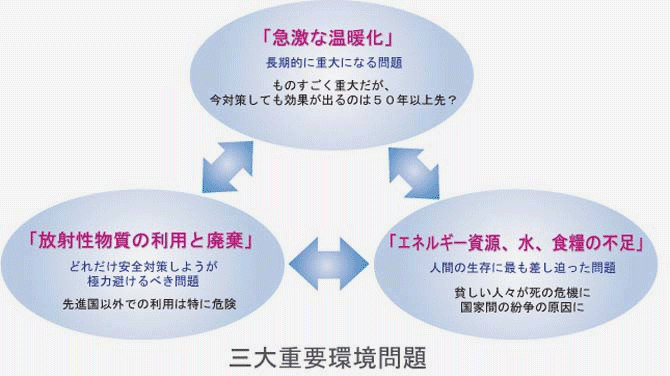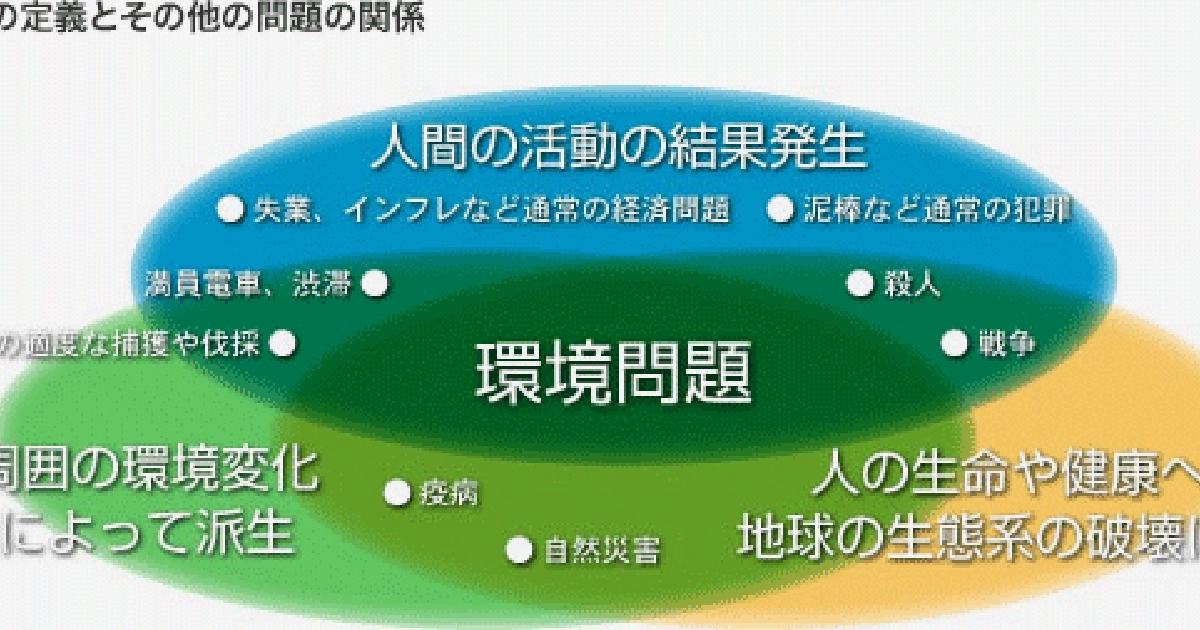Representative's Green Column
12. Summary
2009.02.15
In this column, before getting into the topic of "factor 4", I would like to summarize what I have written so far. Summary so far
Environmental issues are covered in the media on a daily basis.
However, the media has always created the epidemic of environmental problems on their own.
Isn't it really effective if we deal with environmental issues in line with such media trends?
I started the column because I wanted to think about what kind of measures should be prioritized, considering the urgency and importance of each problem while being aware of environmental problems that are not influenced by trends as much as possible.
1. 1. What is an "environmental problem"?
I think the following definition is appropriate.
"Problems caused by changes in the surrounding environment as a result of human activities, with a high risk of damage to human health and life, and destruction of the earth's ecosystem."
2. 2. What are the most important environmental issues?
As a result of examining based on the scale of damage (= "How long will hundreds of millions of people be at risk of life?"), The following three are considered.
"Insufficient energy resources, water and food", "Use and disposal of radioactive materials", "Rapid warming"

3. What are the characteristics of the three important environmental problems?
The characteristics of the three environmental problems are summarized in the following figure. These problems are connected to form simultaneous equations, and among them, we must prioritize according to the degree of urgency and aim for a direction that satisfies all in the long run.

4. Which measures should be prioritized?
"I want to reduce greenhouse gases. I have to meet the growing demand for energy, water and food. I'm afraid of nuclear weapons."
In such a situation, I would like to recommend the following policy.
- ● As an emergency measure, first avoid the energy, water, and food crises.
- 1. 1. Further development of oil, coal and natural gas
- 2. 2. Further expansion of the use of nuclear power (however, only in countries where crisis management is well managed)
- 3. 3. Expanding the use of natural energy (solar energy, wind power, etc.)
- 4. Use bioenergy with care so as not to lead to deforestation or food crisis.
- ● At the same time, we will firmly promote resource conservation.
- 5. Use resources more efficiently.
- 6. Converge measures 1 and 2 as soon as possible.
5. What is the root cause of these environmental problems in the first place?
There are two root causes:
- (1) Explosive increase in population
- (2) Explosive increase in resource consumption per person

And it is the "problem of poverty" that expands the damage of these important environmental problems.
6. What are the essential solutions to important environmental problems?
- (1) Reduce the world's population.
- (2) Reduce resource consumption per person as much as possible.
- (3) Eliminate the problem of global poverty.
Of these, reducing the world's population in any way is the most difficult problem that can lead to the loss of humanity itself. Therefore, in reality, it is most important to "reduce per capita resource consumption" and "solve the problem of world poverty" while slowing the growth of the population as much as possible.
The above is a summary of what I have said in the previous columns.
Next time, I will introduce factor 4 in terms of "reducing per capita resource consumption" and "solving the problem of world poverty."
February 15, 2009 Hironobu Matsui


